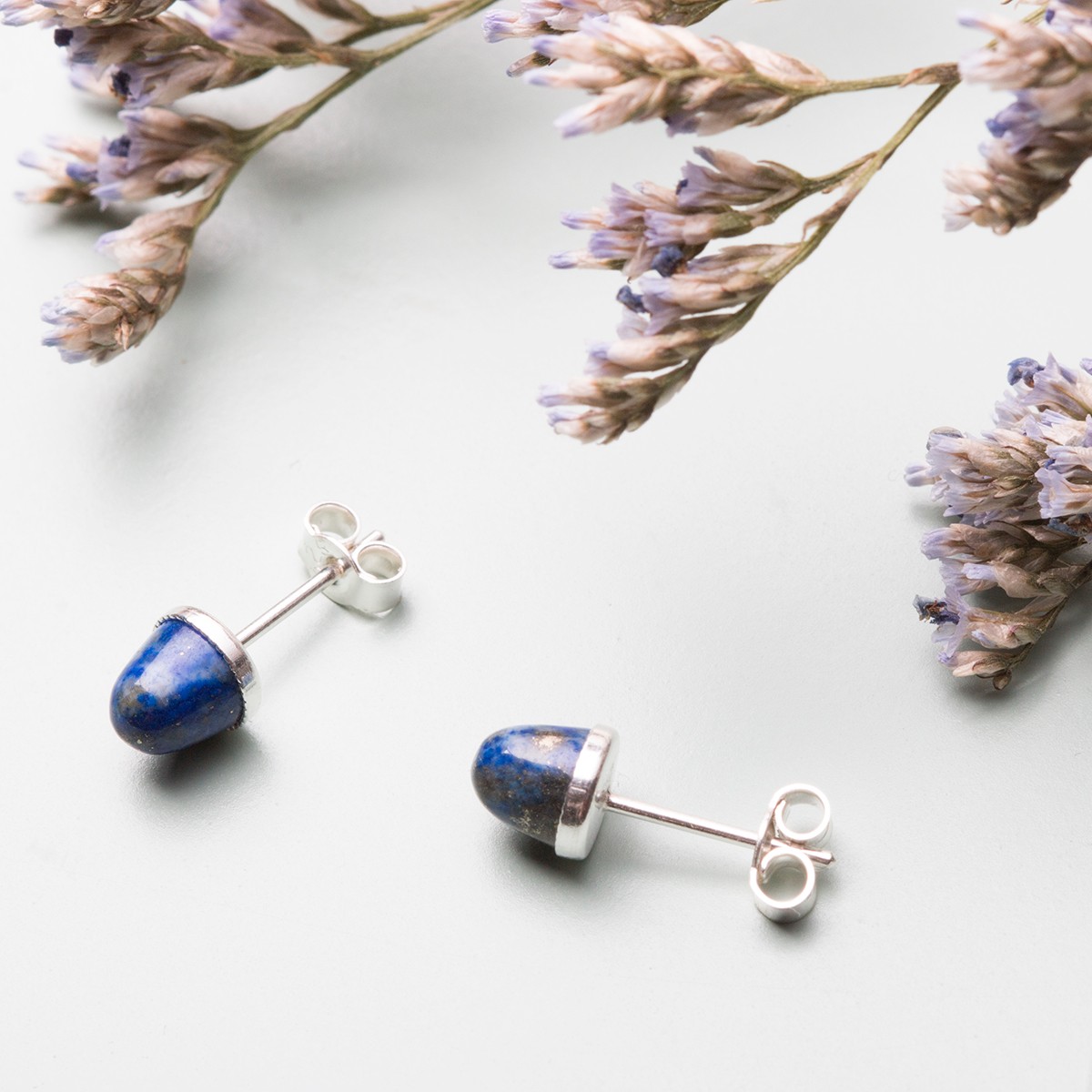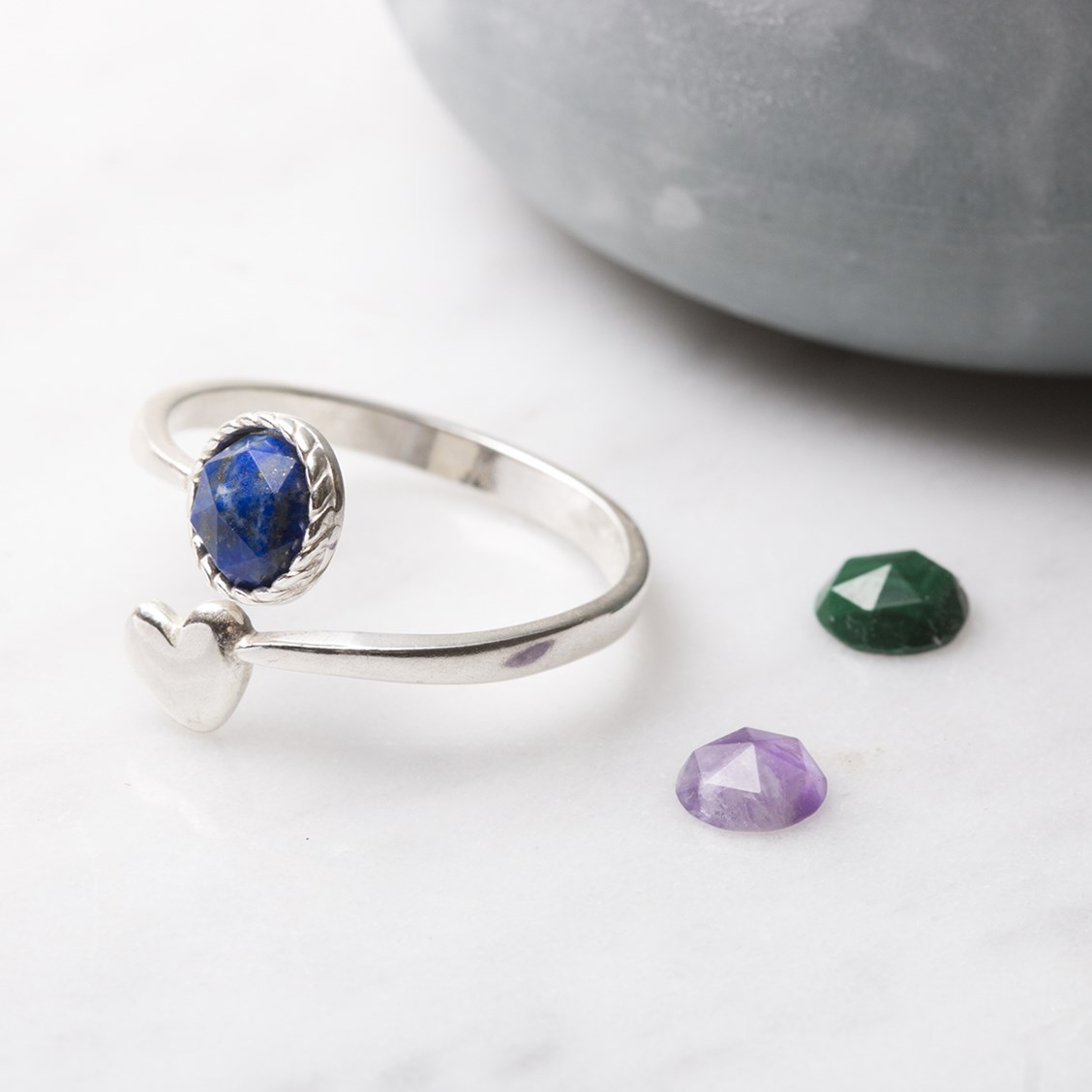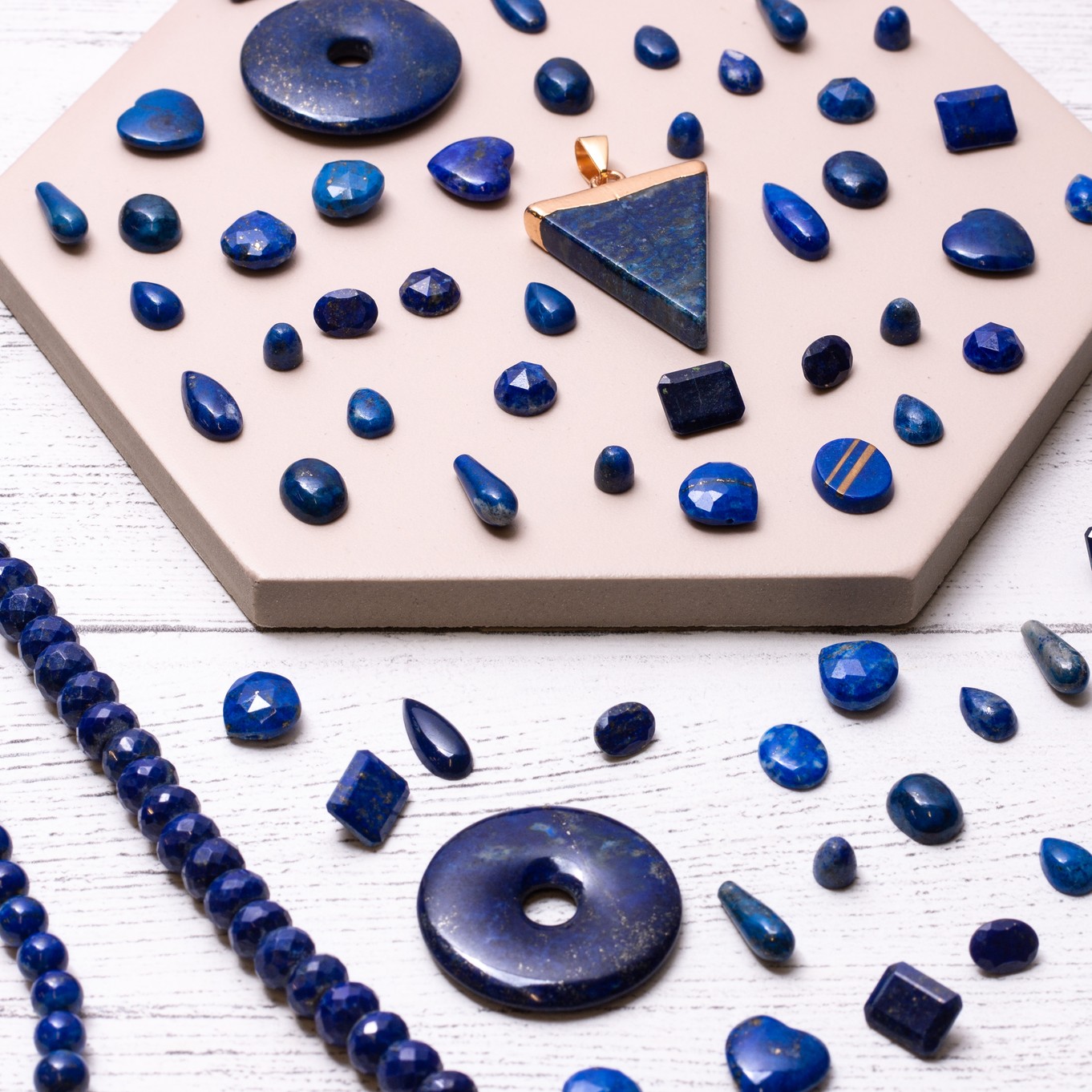Lapis Lazuli, The Stone For Truth & Communication
Lapis lazuli is one of our best selling gemstones and it's no surprise with its intense blue colouring and irresistible specks of shimmering pyrite! It makes us think of a starry night sky and with its strong colour, makes a perfect choice for statement jewellery designs.
In this post, we look at the many facts about this popular stone as well as sharing some inspiration for your handmade jewellery designs, including some beginner friendly designs you can easily create with little or no jewellery making experience.
This gem has been adored throughout history, used to create jewellery, ornamental pieces, as well as being used for cosmetics. It's even been used to make dyes such as the rich blue hue known as ultramarine used in paintings.
Learn more about Lapis Lazuli
Formation: This ancient stone is made up of metamorphic rock, consisting of primarily three minerals of lazurite, calcite and pyrite.
Colour & appearance: The colour of lapis ranges from light blue, indigo, greyish blue to a highly saturated royal blue and is determined by the different minerals present in the stone. A lapis with white calcite or high amounts of pyrite visible is not considered as valuable as a lapis with an even, saturated blue. (Although we have to say we personally love pyrite specks!)
Rarity: Although not expensive, lapis with a uniform, deep blue colouring is considered rare.
Mohs Hardness Scale: Lapis measures 5-6 on the Mohs Hardness Scale, this makes it a soft stone which is something to keep in mind when using this stone for creating jewellery.
Sourced: Lapis is mined in various locations such as Chile, Russia, USA and Canada. Afghanistan is the largest producer of lapis and has been mining this gemstone for thousands of years.
Treatments: Lapis is often dyed to create a uniform colour, removing white calcite then treated with wax or oil to improve the surface and lustre of the stone.
Jewellery Making With Lapis Lazuli
Today lapis is widely known for its use in jewellery design, it's an opaque stone which makes it popular as cabochon stones and beads. Lapis works wonderfully with a range of metals and gemstones. It looks beautiful with both gold and silver as well as combined with other gemstones such as turquoise, pearl, citrine and pyrite.
Lapis measures 5-6 on the Mohs Hardness Scale, this makes it a soft stone which is something to keep in mind when using the stone in your jewellery designs. Due to the soft nature of the stone, it is best suited to earring and pendant designs, as ring and bracelet designs could be easily knocked and damaged.
Spiritual Meaning Of Lapis Lazuli
Lapis lazuli is believed to be a stone to bring strength, courage, wisdom and truth. In history, this stone has even been worn with the belief that it will ward off evil!
It's also thought to be a stone of deep communication, bringing harmony, compassion and love to relationships - helping to create strong bonds with the people around you. For those wanting creativity in their life, this is also a great gem to improve confidence and promote self expression.
Caring For Lapis Lazuli
Care must be given when using lapis as it is sensitive to pressure and heat.
Avoid contact with chemicals as well as submerging in water for extended periods due to the stone being porous.
When storing the stone, keep it away from other stones to avoid it rubbing against harder stones which could cause damage as well as avoiding sunlight which may cause the colour to fade.
Clean with warm, soapy water and do not use in an ultrasonic cleaner or with other chemical cleaners.
Watch how to make a simple lapis donut necklace
This beginner friendly design features our 30mm lapis donuts with our sterling silver flower donut bail, simply push the donut gently over the top of the holder to sit behind the flower design then attach your chosen necklet chain. A quick and easy way to create a piece of jewellery where you can wear lapis everyday and enjoy the many benefits this gem provides.
Also in this section:
- The Chakras & Stones For Beginners
- Top Gemstones For Love & Valentine's Day
- Rare Ammolite For Jewellery Making
- 5 Gemstones To Honour Your Mum
- 5 Gemstones To Wear On Your Travels
- Mohs Hardness Scale, Gemstone Durability & Jewellery Making
- Top 10 Affordable Gemstones For Jewellery Making
- Your Guide To Anniversary Gemstones & Jewellery Making
- Your Guide To Birthstones & Birthstone Jewellery
- Discover Rare Cornish Turquoise
- Garnet: The January Birthstone
- Amethyst: The February Birthstone
- Aquamarine: The March Birthstone
- Diamond: The April Birthstone
- Emerald: The May Birthstone
- Pearl: The June Birthstone
- Ruby: The July Birthstone
- Peridot: The August Birthstone
- Sapphire: The September Birthstone
- Opal: The October Birthstone
- Topaz: The November Birthstone
- Turquoise: The December Birthstone
- Types Of Diamonds For Jewellery Making
- Lapis Lazuli, The Stone For Truth & Communication
- Types Of Agate Stones For Jewellery Making
- What Are Precious & Semi-Precious Stones?
- Watermelon Tourmaline For Jewellery Making
- 6 Stones For Alternative Engagement Rings
- Rare Tanzanite For Jewellery Making
- Gemstones For Your Inner Mermaid
- 5 Spiritual Gemstones To Help Your Mind & Body
- Rose Quartz, The Love Stone
- What Are Drusy Gemstones?
- What Is A Boulder Opal & How Do We Source Them
- All About Our Natural Untreated Turquoise




